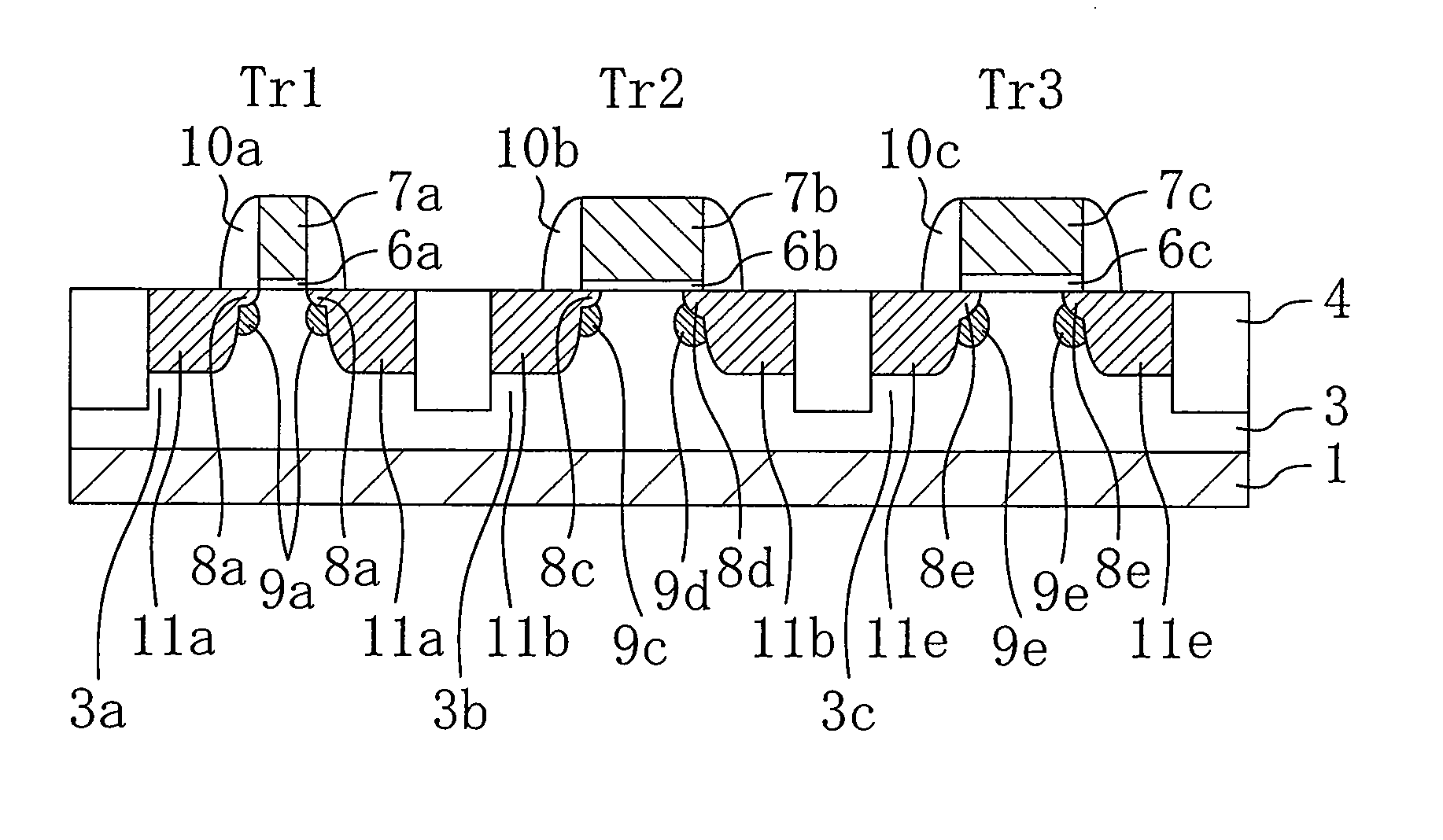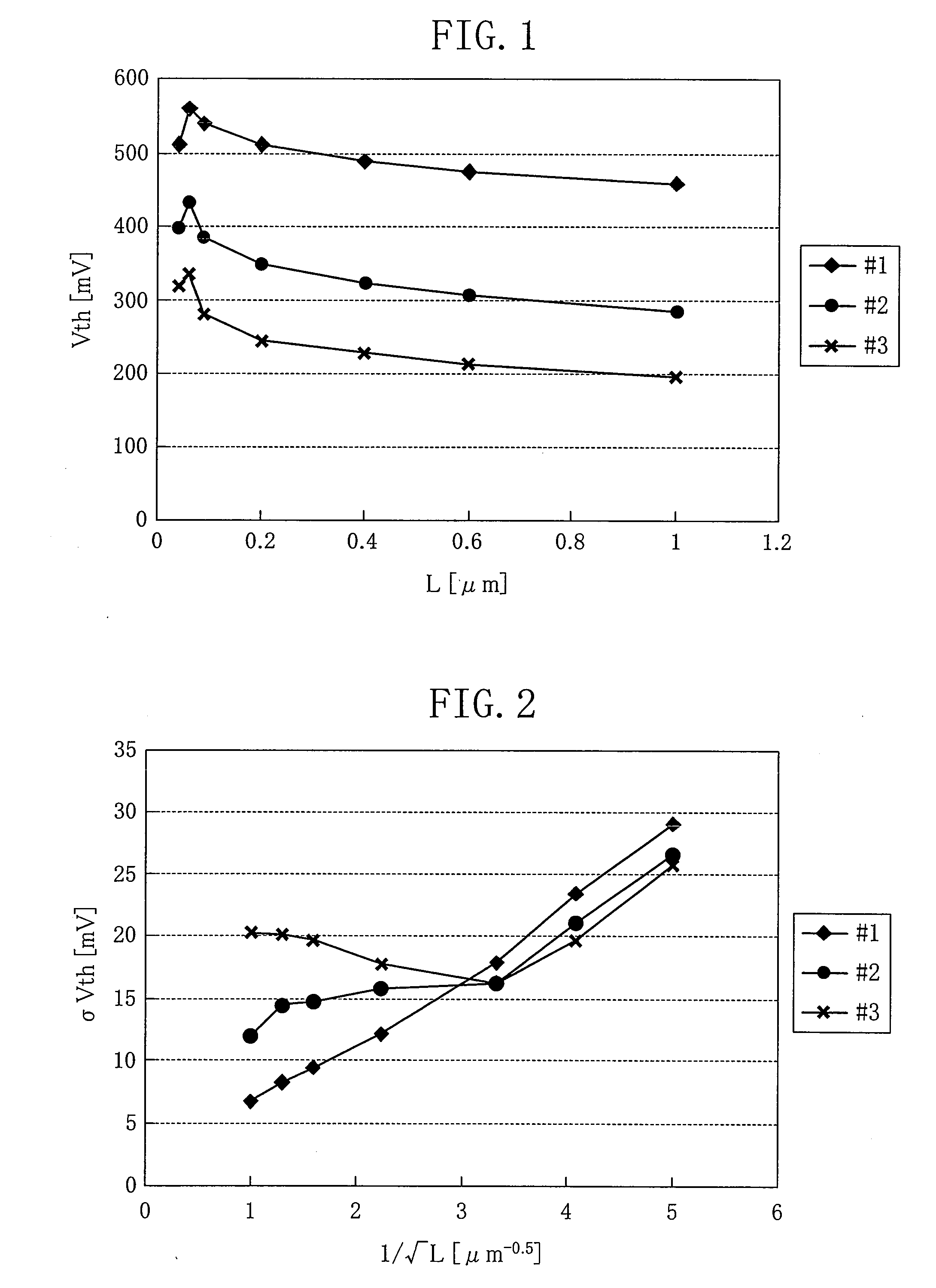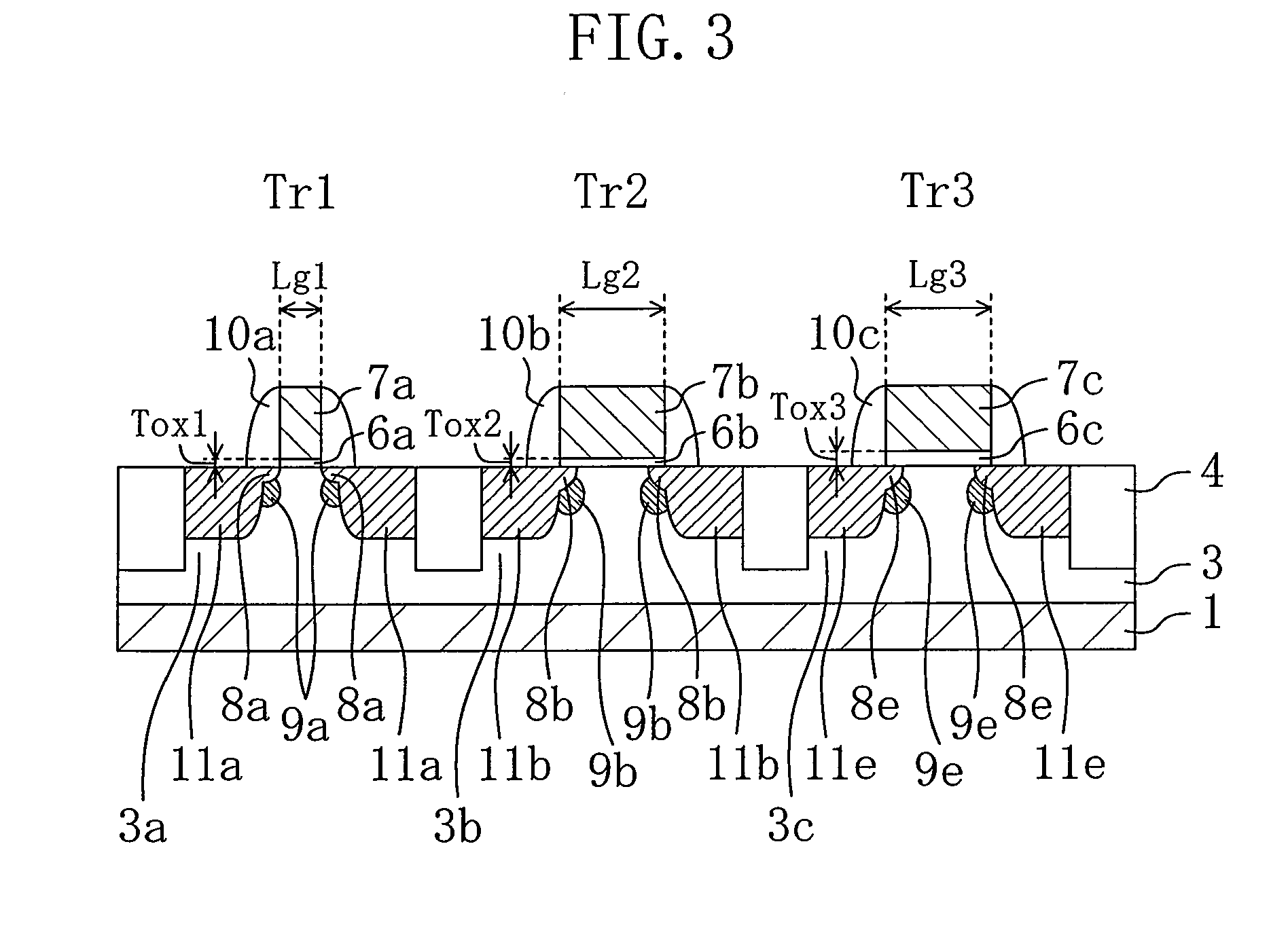Semiconductor device and manufacturing method thereof
a technology of semiconductor devices and semiconductors, applied in semiconductor devices, basic electric elements, electrical equipment, etc., can solve the problems of increasing manufacturing costs suppress the short-channel effect, suppress the variation in electrical characteristics of the second transistor
- Summary
- Abstract
- Description
- Claims
- Application Information
AI Technical Summary
Benefits of technology
Problems solved by technology
Method used
Image
Examples
first embodiment
[0038]FIG. 3 is a cross-sectional view showing a semiconductor device according to a first embodiment of the present invention. In this embodiment, an N-channel MOS transistor will be described as an example, though the present invention is also applicable to a P-channel MOS transistor. In FIG. 3, Tr1 indicates a 1.2-V core transistor, Tr2 indicates a 1.2-V analog transistor, and Tr3 indicates a 1.8-V transistor. Although Tr3 is assumed to be a 1.8-V transistor in this embodiment, a 2.5- or 3.3-V transistor can also be applicable to the semiconductor device of the present invention. Note that an “analog transistor” refers to a transistor which executes an analog function in a circuit. Although most analog transistors have a longer gate length than that of core transistors, an analog transistor may have basically the same structure as that of a core transistor.
[0039]As shown in FIG. 3, the semiconductor device of this embodiment comprises a P-type well 3 provided in a P-type semicond...
second embodiment
[0054]FIG. 5 is a cross-sectional view showing a semiconductor device according to a second embodiment of the present invention. In this embodiment, an N-channel MOS transistor will be described as an example, though the present invention is also applicable to a P-channel MOS transistor. In FIG. 5, Tr1 indicates a 1.2-V core transistor, Tr2 indicates a 1.2-V analog transistor, and Tr3 indicates a 1.8-V transistor. Although Tr3 is assumed to be a 1.8-V transistor in this embodiment, a 2.5- or 3.3-V transistor can also be applicable to the semiconductor device of the present invention. Note that, in FIG. 5, the same parts as those of the semiconductor device of the first embodiment of FIG. 3 are indicated by the same reference symbols. In the semiconductor device of this embodiment, the transistors Tr1 and Tr3 have the same structures as those of the semiconductor device of the first embodiment.
[0055]As shown in FIG. 5, the semiconductor device of this embodiment is characterized in t...
PUM
 Login to View More
Login to View More Abstract
Description
Claims
Application Information
 Login to View More
Login to View More - R&D
- Intellectual Property
- Life Sciences
- Materials
- Tech Scout
- Unparalleled Data Quality
- Higher Quality Content
- 60% Fewer Hallucinations
Browse by: Latest US Patents, China's latest patents, Technical Efficacy Thesaurus, Application Domain, Technology Topic, Popular Technical Reports.
© 2025 PatSnap. All rights reserved.Legal|Privacy policy|Modern Slavery Act Transparency Statement|Sitemap|About US| Contact US: help@patsnap.com



